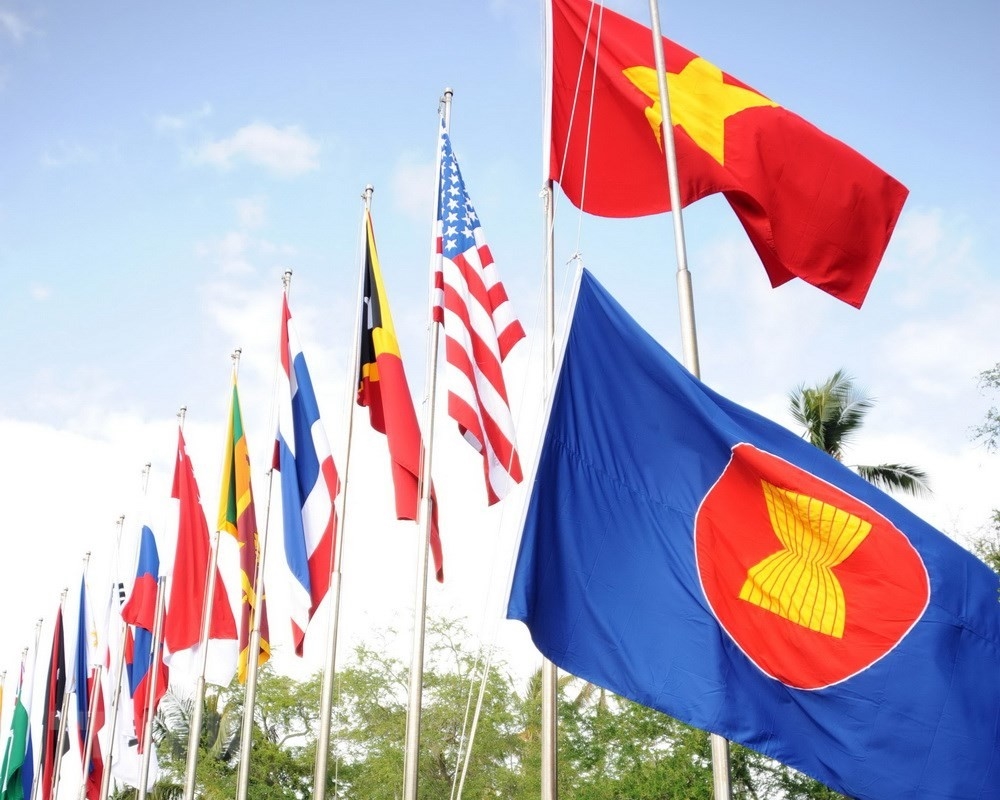MOIT VIETNAM | Challenges and opportunities for ASEAN in the post-Covid era
/ News / Activities
Challenges and opportunities for ASEAN in the post-Covid era
ASEAN's prosperity requires proper management of the bloc's development in the "new normal." However, it should be emphasized that the adoption of digital technology, supply chain resilience, and skill development will be more integrated in the post-pandemic world, necessitating a coordinated development strategy.
In fact, the pandemic has accelerated the digitization process. The pandemic has pushed digital technology to its limits, and the world needs to learn more about its effectiveness. There are also significant investments being made to make digital interactions more seamless. The increasing efficiency of digital technology in carrying out economic transactions will make it an indispensable tool. Digitalization will be especially important in the supply chain, which is undergoing profound transformation.
Many businesses have been forced to rethink their supply chains as a result of the COVID-19 pandemic. They must adjust to disruptions in the flow of goods and people caused by border closures in the short term. This also forces them to look for ways to strengthen their supply chains. Businesses have three options in this regard: consolidation, diversification, and subleasing.

Consolidation is done to keep suppliers close to manufacturing facilities, for example, by sourcing domestic inputs. Diversification entails locating multiple sources of domestic inputs or entering new markets. Finally, reallocating is the process of returning economic activity to its core. Digital technology will play a significant role in determining which options are preferred by businesses. Consolidation and reallocation refer to the concentration of technological forces, whereas diversification refers to the dispersal of technological forces. According to Fukunari Kimura, chief economist at the Economic Research Institute for ASEAN and East Asia (ERIA), focus is when economic activity is consolidated. By using technology, companies can perform many activities that would normally be outsourced.
Technology, in particular, has the potential to reduce labor costs in situations where jobs previously performed by humans can now be automated and performed by computers. There is less reason for multinational corporations to seek out low-wage countries in order to save money. Instead, they can invest in technological advancements. Simultaneously, technology creates dispersion forces, allowing more economic activities to be coordinated over long distances. With seamless communication, production doesn't have to take place in the same place which can be distributed in many places. Maintaining the vitality of supply chains is essential for ASEAN, which must focus on reorganization.
After all, ASEAN's economic growth is driven by the forging of strong international production links within ASEAN and with East Asia. However, the supply chain will be very different in the digital age. Because of the increased importance of digital technology in the supply chain, digital infrastructure and skill development have become critical to the supply chain's viability. As the types of economic activities and related technologies change, so does the demand for corresponding skills.

Much of ASEAN's growth over the last few decades has relied on foreign investment in labor-intensive manufacturing sectors, which easily complement the types of skills that ASEAN workers can offer. However, technological advancements have gone far beyond upgrading the skills development system, and many ASEAN workers currently lack the necessary skills for the new jobs being created.
Workers with the right skills will have a bright future. Workers and businesses that can harness and complement digital technology will benefit greatly from these trends. Skills development is not only a driver of technology adoption and supply chain resilience, but it is also a requirement. Acquiring the skill is an individual decision by comparing the costs and benefits of investing in these skills.
Technology adoption and a thriving economy will ensure that the workforce has multiple opportunities to develop their skills. As the demand for workers to supplement the digitization process grows, their wages will rise faster than those without such skills. Individuals will often acquire skills that are in high demand in response to wage increases; this expanding supply will investigate the salary increase while making it possible for more people to benefit from digitization. However, workers' ability to respond to market signals will be heavily reliant on access to a skills development system. As a result, there is a need for a system that allows workers to implement skills that will be valued in the digital world.

ASEAN policymakers must consider digitalization, supply chain resilience, and skill development as part of a comprehensive growth and recovery strategy. ASEAN countries can use digital technology to revitalize traditional sectors such as agriculture and manufacturing, while also increasing the productivity of small and medium-sized businesses. However, in order to fully benefit, businesses must gain access to the global market by participating in the supply chain and attracting a highly skilled workforce.
Similarly, for ASEAN to thrive in the future, an agile supply chain is required. It will ensure that ASEAN consumers have access to low-cost goods and services from anywhere, and that ASEAN businesses can participate in the global value chain. However, attracting new investment in supply chain operations will necessitate the development of digital technology and a highly skilled workforce.
-
/ News / Activities
Prime Minister Pham Minh Chinh’s Strategic Visit to Laos Marks New Chapter in Bilateral Relations
Prime Minister Pham Minh Chinh’s official visit to the Lao People’s Democratic Republic and his co-chairmanship of the 47th meeting of the Vietnam–...
-
/ News
Deepening Cooperation, Strengthening Regional Unity
On the afternoon of July 28, 2025, at the Government Headquarters in Hanoi, Deputy Prime Minister and Minister of Foreign Affairs of Vietnam, Mr. B...
-
/ News / Activities
Vietnam and Laos Accelerate Toward Deeper Regional Integration and Unprecedented Trade Growth
In an era where regional connectivity and economic resilience are critical pillars for national development, Vietnam and Laos are emerging as a mod...





